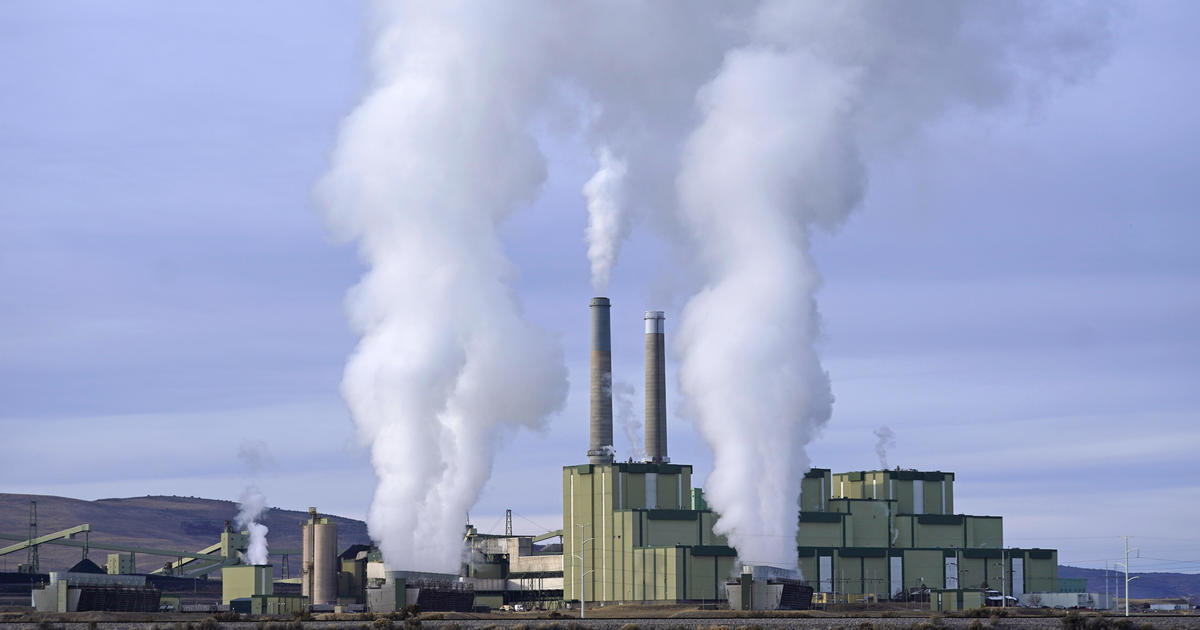Washington — The Supreme Court on Friday allowed the Environmental Protection Agency to continue enforcing for now a new rule that set more stringent standards on emissions of mercury and other toxic metals from coal-fired power plants.
The court declined a request for emergency relief sought by nearly a dozen states and the energy sector, which had argued the EPA’s new standards are not necessary under the Clean Air Act because they yield no quantifiable public health benefit. There were no noted dissents.
The measure is one of three implemented by the EPA in recent months that is being challenged by the energy industry and nearly half of the states. The challengers have made separate requests for the Supreme Court to temporarily halt all three of the new rules, including the Biden administration’s restrictions on greenhouse gas emissions from coal-fired power plants.
The EPA rule
This case involves the Mercury and Air Toxics Standards, or MATS, which are emissions requirements for coal-fired power plants first issued by the EPA in 2012. The agency argued it had the authority to set the levels under a Clean Air Act program addressing emissions of hazardous air pollutants that pose a risk of adverse health effects, which include neurotoxins like mercury, human carcinogens such as arsenic and other toxic chemicals.
Rick Bowmer / AP
But the Supreme Court in 2015 ruled that the EPA improperly failed to consider the costs of regulating power plants’ emissions of hazardous air pollutants. Several years later, in 2023, the EPA determined after considering the costs that regulation of power plants is “appropriate and necessary,” a standard set by the Clean Air Act.
The EPA rolled out the rule at the center of the dispute in May after finding that certain technological developments warranted changes to the 2012 emissions standards for coal-fired power plants. The new limits took effect in July, and plants have up to three years to comply with them.
The rule first tightened the emissions standards for non-mercury metals. An EPA assessment found more than 90% of coal-fired plants can already meet the new limit. Only two plants at a facility in Montana would have to install new technologies to meet the revised standard, according to the agency.
The measure also requires plants that use lignite coal to meet the same mercury emissions standards as facilities firing other types of coal.
Several states, power plants, mining companies and other energy industry groups challenged the rule in federal court earlier this year and asked it to halt enforcement during legal proceedings. The U.S. Court of Appeals for the District of Columbia Circuit denied their request to pause the rule and expedited its review of the measure.
Seven different groups, including 23 states, then sought emergency relief from the Supreme Court.
The states had argued that the new rule will impose weighty costs and risk destabilizing the nation’s power grids without any quantifiable public health benefit for reducing emissions of hazardous air pollutants.
“EPA cannot quantify any relevant or meaningful public health or environmental benefit from the mandated reduction in [hazardous air pollutants] emissions. None,” attorneys general for the nearly two dozen states told the Supreme Court in a filing.
The states said that if the rule is allowed to take effect, implementation costs will be significant, raising the likelihood that power plants will be forced to shutter and electricity prices could rise.
But the Biden administration has refuted the claims from the energy industry and states. First, the EPA found that nearly all coal-fired power plants can meet the tightened standards without significant investments, it said in a filing.
The EPA also projected that no coal-fired plant would retire because of the rule. Additionally, the Biden administration warned that pausing the rule would harm downwind states and tribal communities that live near power plants.
The Supreme Court’s order follows a series of recent rulings that have curtailed efforts by the EPA to keep the nation’s air and water clean. In June, the high court divided 5-4 to block the agency’s so-called “good neighbor” plan, which aims to curb air pollution and address harmful smog.
Last year, it curbed the EPA’s authority to regulate certain wetlands under the Clean Water Act. In June 2022, the high court found Congress didn’t grant the EPA the authority under the Clean Air Act to set emissions caps based on the generation-shifting approach taken through the Clean Power Plan rule.

